Panasonic WH-216KZ, WH-212LZ, WH-209MZ Operation Manual
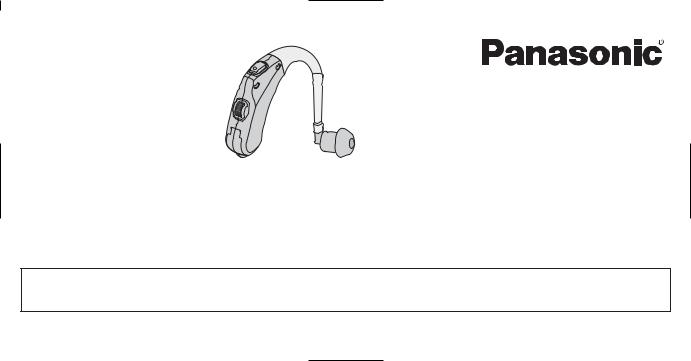
|
Operating Instructions |
|
Hearing Instrument |
|
WH-216KZ |
The information contained in this manual is important for safe |
WH-212LZ |
and reliable operation. Anyone who will handle, maintain, store, |
WH-209MZ |
or dispose of your hearing aid should read this document. |
|
Carefully read and thoroughly understand this entire document before attempting to set up and operate the hearing aid. |
|
Failure to follow the operating instructions may result in poor performance of the hearing aid or even cause permanent |
|
damage to the user. Keep this document for future reference. If you have any questions, consult the dispenser where |
|
you purchased your hearing aid. |
|
The Limited Warranty document is enclosed together in the package. Keep it in a secure place. Make sure that it is |
|
properly completed, signed with the authorized dispenser’s name, and filled in with date of original purchase, name |
|
of dispenser and other important information. |
|
The difference among the three models (WH-216KZ, WH-212LZ, WH-209MZ) is only additional installed circuit as |
|
described in Page 37 of this document; otherwise the same. |
|

Introduction
We would like to thank you for purchasing the Panasonic Hearing Instrument.
The Panasonic Digital Behind the Ear (BTE) hearing aid helps optimize both intelligibility and comprehension for the hearing impaired.
The type of hearing aid that will work best for you depends on the type and severity of your hearing loss and usage conditions. You will need to get a thorough hearing evaluation and have your ears examined by an ear specialist or an audiologist. They will suggest the most appropriate type of hearing aid for you depending on the type and degree of hearing loss. In order to get the right hearing aid that will be tailored to meet your individual needs and lifestyle, be sure to have your hearing aid properly fitted and fine-tuned to your ears, as an improper fit can cause discomfort and flexibility issues, and even further damage to the ear.
It is important to keep in mind that hearing aids will not restore normal hearing, nor will they halt the progression of hearing loss. They are intended to compensate for impaired hearing. They should be used only for the purpose they are designed and
2 directed. Carefully read the instructions and make sure you fully understand the operation of the hearing aid before using it.
Component structure
The Panasonic Digital Behind the Ear (BTE) hearing |
|
aid consists of the following items. If there are any |
|
missing, misplaced, or defective components, |
|
contact your dispenser. |
|
Components: |
|
·Eartip Size XL (LL), L, M ..... |
QTY: 1 of each size |
·Open-type eartip Size L ..... |
QTY: 1 |
·Eartip holder ..................... |
QTY: 1 |
·Colored ring Red/Blue ...... |
QTY: 1 of each color |
·Tube ................................. |
QTY: 2 |
·Carrying case .................... |
QTY: 1 |
·Dehumidifier ..................... |
QTY: 1 |
(Colored ring Red/Blue, Tube, and the other ) sizes of eartips than the one to be used for
your hearing aid will be kept at your dispenser.
Documentation:
·Operating Instructions ·Limited Warranty ·Quick Tips for Use

Contents
Before Use |
|
|
|
7 Use |
|||
Warning to Hearing Aid Dispensers ................. |
4 |
Safety Precautions ......................................... |
|||||
Important Notice for Prospective Hearing Aid Users ... |
5 |
Usage Instructions ....................................... |
15 |
|
|
||
Children with Hearing Loss .............................. |
6 |
Care and Maintenance ................................ |
17 |
|
|
||
|
|
|
|
|
Before |
||
Operations |
|
|
|
|
|||
Component Descriptions ............................... |
20 |
4 |
Adjusting the Volume .............................. |
23 |
|
|
|
Basic Operation Flow ..................................... |
20 |
5 |
Switching between Memory Programs..... |
24 |
|
|
|
1 Inserting/Removing Zinc Air Battery |
21 |
6 |
Turning off the Hearing Instrument |
Operations |
|||
25 |
|
|
|||||
2 Wearing the Hearing Instrument ................ |
22 |
7 |
Removing the Hearing Instrument ........... |
25 |
|
|
|
3 Turning on the Hearing Instrument ............ |
23 |
Use with Telephone ..................................... |
26 |
|
|
|
|
|
|
|
|
|
|
|
|
Reference |
|
How Family and Friends Can Help ................ |
31 |
|
|
||
Carrying Case ................................................ |
27 |
Troubleshooting Guide ................................ |
32 |
|
|
||
Open-type Eartip |
27 |
Performance |
Reference |
||||
33 |
|
|
|||||
Colored Ring Setup ....................................... |
28 |
Specifications .............................................. |
37 |
|
|
||
Tube Adjustment ........................................... |
29 |
Information ................................................. |
38 |
|
|
||
For First-Time Users ....................................... |
30 |
Warranty and Customer Service .................. |
42 |
|
3 |
||
|
|
|
|
|
|
|
|

Warning to Hearing Aid Dispensers
A hearing aid dispenser should advise a prospective Before hearing aid user to consult promptly with a licensed
physician (preferably an ear specialist) before dispensing a hearing aid if the hearing aid dispenser
Use determines through inquiry, actual observation, or review of any other available information concerning the prospective user, that the prospective user has any of the following conditions:
|
· Visible congenital or traumatic deformity of the ear. |
|
· History of active drainage from the ear within the |
|
previous 90 days. |
|
· History of sudden or rapidly progressive hearing |
|
loss within the previous 90 days. |
|
· Acute or chronic dizziness. |
|
· Unilateral hearing loss of sudden or recent onset |
|
within the previous 90 days. |
|
· Audiometric air-bone gap equal to or greater than 15 |
|
decibels at 500 hertz (Hz), 1,000 Hz, and 2,000 Hz. |
4 |
|
·Visible evidence of significant cerumen accumulation or a foreign body in the ear canal.
·Pain or discomfort in the ear.
Hearing aids must be programmed and adjusted by the dispenser on an individual basis. Inappropriate hearing aid setting may cause damage to the ears of your customers. If you have any questions about fitting, contact the Panasonic sales division below.
Company name:
Panasonic Corporation of North America Health Care Group
Address:
One Panasonic Way, 1H-6, Secaucus, NJ 07094
Telephone No.:
1-888-422-6309

Important Notice for Prospective Hearing Aid Users
Good health practice requires that a person with a hearing loss have a medical evaluation by a licensed physician (preferably a physician who specializes in diseases of the ear) before purchasing a hearing aid. Licensed physicians who specialize in diseases of the ear are often referred to as otolaryngologists, otologists or otorhinolaryngologists. The purpose of medical evaluation is to assure that all medically treatable conditions that may affect hearing are identified and treated before the hearing aid is purchased. Following the medical evaluation, the physician will give you a written statement that states that your hearing loss has been medically evaluated and that you may be considered a candidate for an audiologist or a hearing aid dispenser, as appropriate, for a hearing aid evaluation. The audiologist or hearing aid dispenser will conduct a hearing aid evaluation to assess your ability to hear with and without a hearing aid. The hearing aid evaluation will enable the audiologist or dispenser to select and fit a hearing aid to your individual needs.
If you have reservations about your ability to adapt to amplification, you should inquire about the availability of a trial-rental or purchase-option program. Many hearing aid dispensers now offer programs that permit you to wear a hearing aid for a period of time for a nominal fee after which you may decide if you want to purchase the hearing aid. Federal law restricts the sale of hearing aids to those individuals who have obtained a medical evaluation from a licensed physician. Federal law permits a fully informed adult to sign a waiver statement declining the medical evaluation for religious or personal beliefs that preclude consultation with a physician. The exercise of such a waiver is not in your best health interest and its use is strongly discouraged.
Before Use
5

Children with Hearing Loss
In addition to seeing a physician for a medical Beforeevaluation, a child with a hearing loss should be directed to an audiologist for evaluation and rehabilitation since hearing loss may cause
problem in language development and the Useeducational and social growth of a child.
An audiologist is qualified by training and experience to assist in the evaluation and rehabilitation of a child with a hearing loss.
6
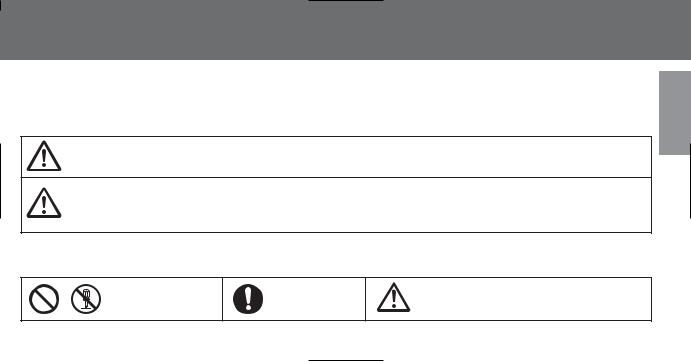
Safety Precautions
Follow the instructions below to reduce the risk of personal injury or damage to the hearing instrument.
The following symbols are used throughout this document, and contain important differences regarding the probability of serious injury. These definitions are as follows:
WARNING
CAUTION
The following symbols specify behavior or actions which are not permitted and an instruction that must be carried out.
Prohibitions |
Mandatory |
Attention, consult |
|
ACCOMPANYING DOCUMENT |
|||
|
|
Before Use
7

Safety Precautions (Continued)
Use Before
 WARNING
WARNING
Keep out of reach of children and pets
A hearing instrument and its components can be a choking hazard or can lead to death if swallowed. To prevent accidental ingestion of hearing instrument or
its components and/or accessories, secure them in a safe place where they are not accessed by infants, small children, pets, or others who might accidentally swallow them.
· If swallowed, obtain immediate medical attention.
Keep batteries away from children and pets
Hearing instrument batteries can be easily swallowed and pose a choking hazard. To prevent accidental ingestion, secure batteries in a safe place where they are not accessed by infants, small children, and pets. Dispose of used batteries carefully.
·If swallowed, call the 24-hour National Button Battery Ingestion Hotline at 1-(202)-625-3333. Seek medical attention.
8
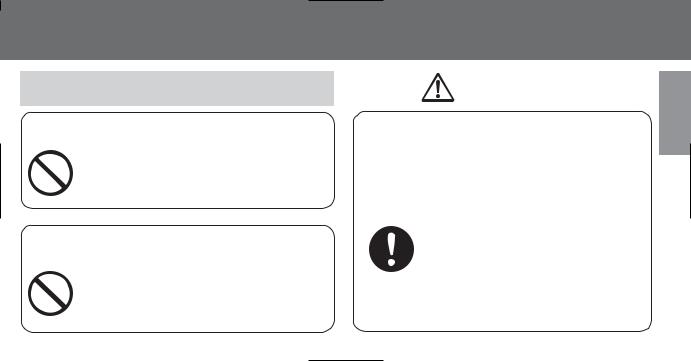
 WARNING
WARNING
Do not let others use your hearing aid
Inappropriate use of a hearing aid can cause severe damage to the ear. Do not let children play with the hearing aid. Keep the hearing aid out of reach of children.
Do not disassemble, short-circuit, or expose the zinc air battery to water or fire
Failure to heed this warning may result in leakage or explosion, which can lead to injury or contamination of surrounding factors.
|
Use |
CAUTION |
|
have your ear examined by a |
Before |
Before purchasing a hearing aid, |
|
licensed physician, or get a hearing |
|
evaluation from a hearing |
|
instrument specialist or an |
|
audiologist |
|
If the wrong type of a hearing aid is selected, or a hearing aid is used in an improper manner, it can cause ear or hearing damage.
9
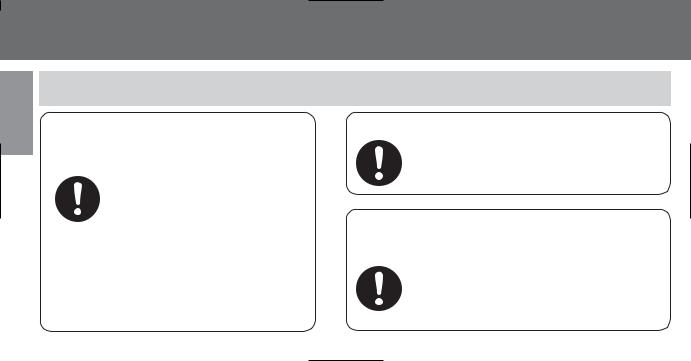
Safety Precautions (Continued)
Use Before
10
 CAUTION
CAUTION
Stop using the hearing aid if you experience any physical discomfort
If you keep using the hearing aid when you suffer from headache, dizziness, pain in the ear or skin abnormality at the ear such as swelling and rash, your condition may become worse.
· Stop using the hearing aid immediately and consult your physician.
Ask the dispenser for a proper fit
Inappropriate fitting may result in damage to your hearing. Have your hearing aid
fitted to your individual needs.
Make sure that you position the battery correctly
Insert the fresh battery with the plus side up. Inserting a battery with the positive and negative terminals mixed up may result in a burst or leak, which can cause injury or damage to the unit.
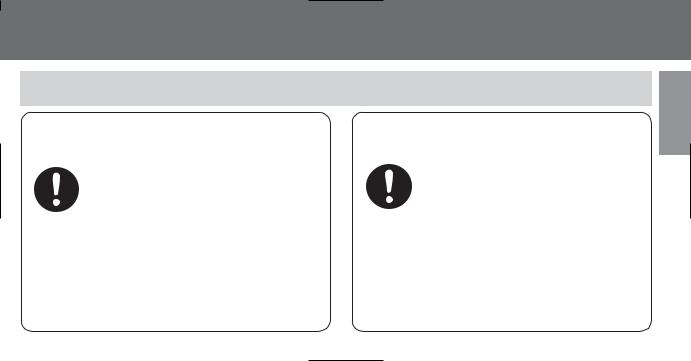
 CAUTION
CAUTION
Before wearing the hearing instrument, make sure that the eartip fits into place
If the eartip is not securely attached, it may come off and remain in the ear. When attempting to remove the eartip, special caution must be taken not to push it further into the ear.
If you cannot take out the eartip, consult your physician. Immediate medical care is important to avoid possible complications. When you replace the eartip, be sure to contact your dispenser. (See page 22.)
Confirm that the hearing instrument is completely free of burrs and cracks
Rugged projection like sharp edges and rough burrs protruding from the surface of the hearing instrument can cause cuts and nicks to the skin.
·When cleaning your hearing aid, wipe it gently with a soft cloth. Never use organic solvents such as alcohol, paint thinner, or benzene. Failure to heed this caution may result in deformation of the hearing instrument or cracking on the surface.
11
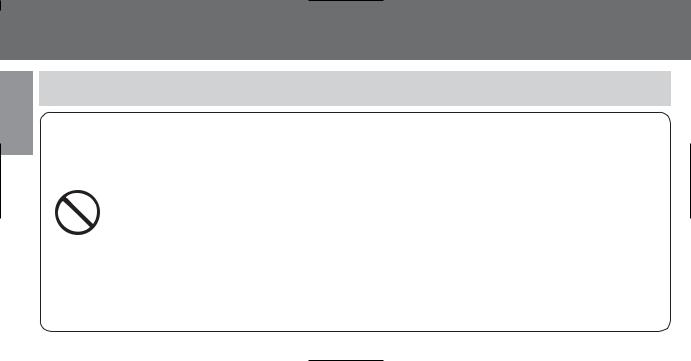
Safety Precautions (Continued)
Use Before
 CAUTION
CAUTION
Do not use the hearing instrument near any device that emits high frequency radio waves or generates a strong magnetic field
The hearing instrument may emit acoustic feedback which can result in hearing damage.
·Remove your hearing aid while undergoing any kind of electromagnetic treatment such as X-Rays, Magnetic Resonance Imaging (MRI), Computerized Axial Tomography (CAT), Electroencephalogram (EEG), Electrocardiogram (ECG), Short-Wave Diathermy, or other electrical or magnetic treatment.
·Other types of radiation such as burglary alarms, room surveillance systems, radio equipment, and mobile phone will not damage the hearing aid. They could, however, affect the sound quality or produce unusual sounds in the hearing aids.
12
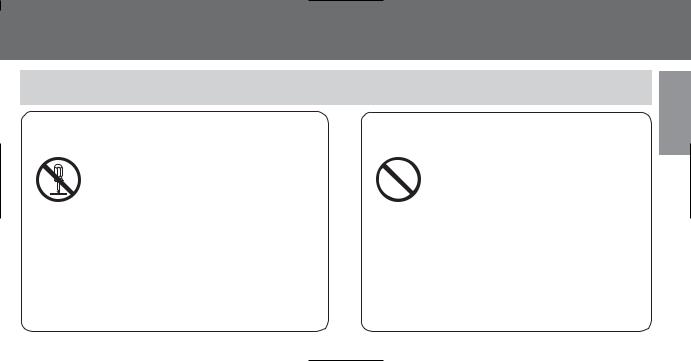
 CAUTION
CAUTION
Do not modify or disassemble the |
Do not immerse the hearing aid in |
hearing instrument |
water, and do not allow it to get wet |
Failure to heed this warning may |
Otherwise, it may short-circuit and |
result in damage to the ear. |
become damaged. |
·Contact your dispenser if you need to have your hearing instrument adjusted, or if you encounter unexpected behavior of the hearing instrument.
Before Use
13
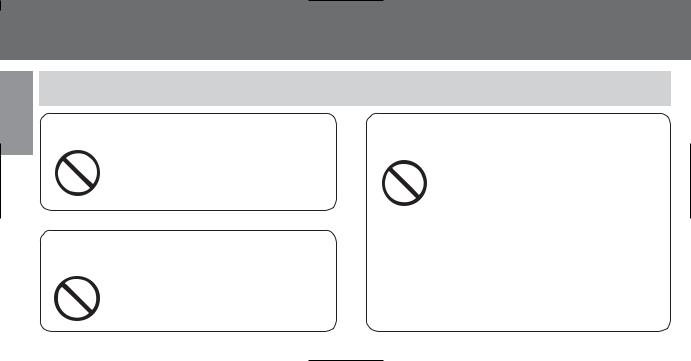
Safety Precautions (Continued)
Use Before
 CAUTION
CAUTION
Do not set the volume level too high
Excessively loud noise can deteriorate hearing. Especially, hearing aids must be carefully set for children with hearing loss.
Make sure that the volume level is safe and appropriate before use
Exposure to loud sounds or excessive sound levels can cause damage to the inner ear.
Do not use any other types of tubes or option tubes
14
Replacing the tube will change the volume, which can cause ear damage.
·Adjust the volume to the most appropriate level.
